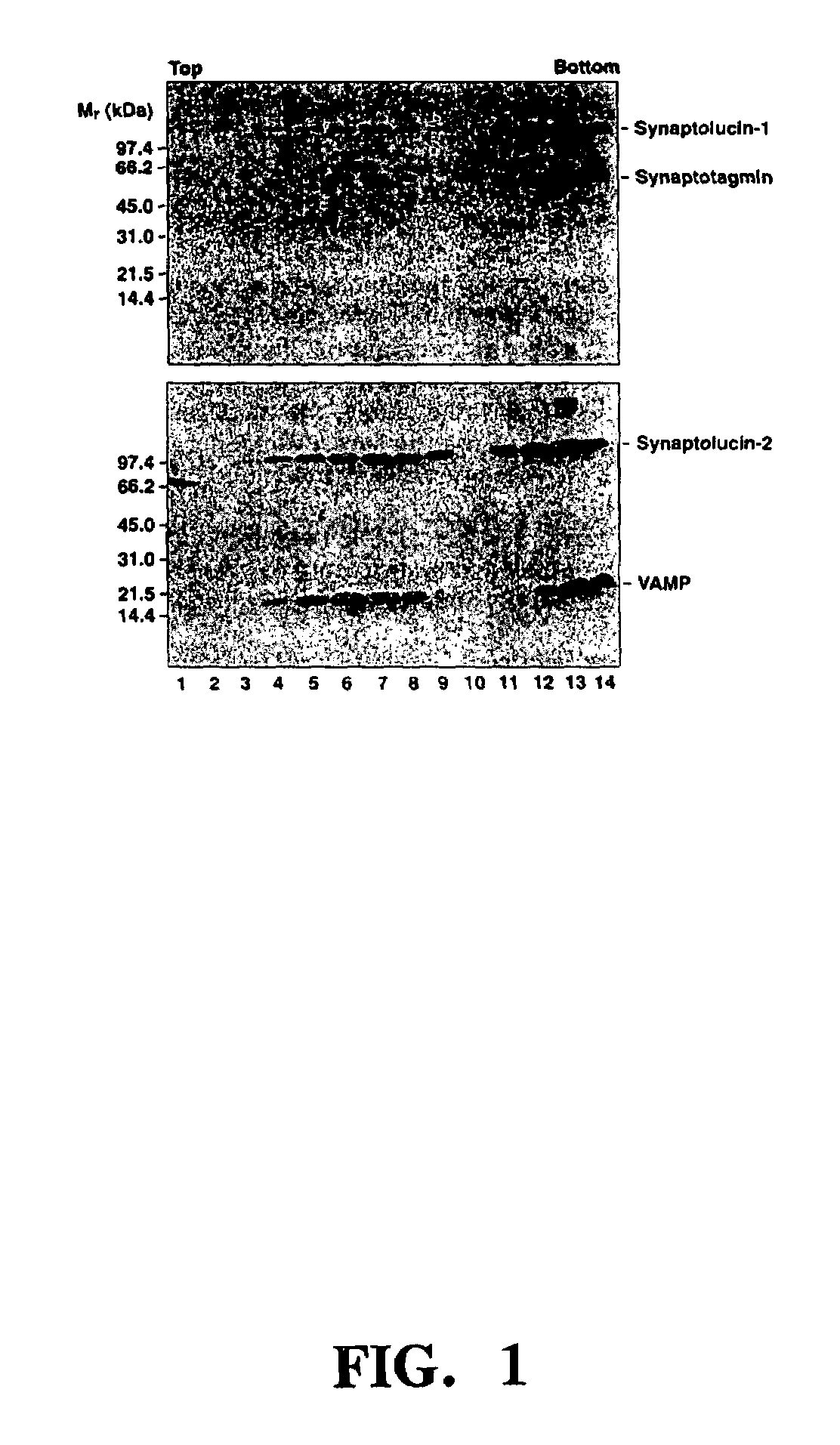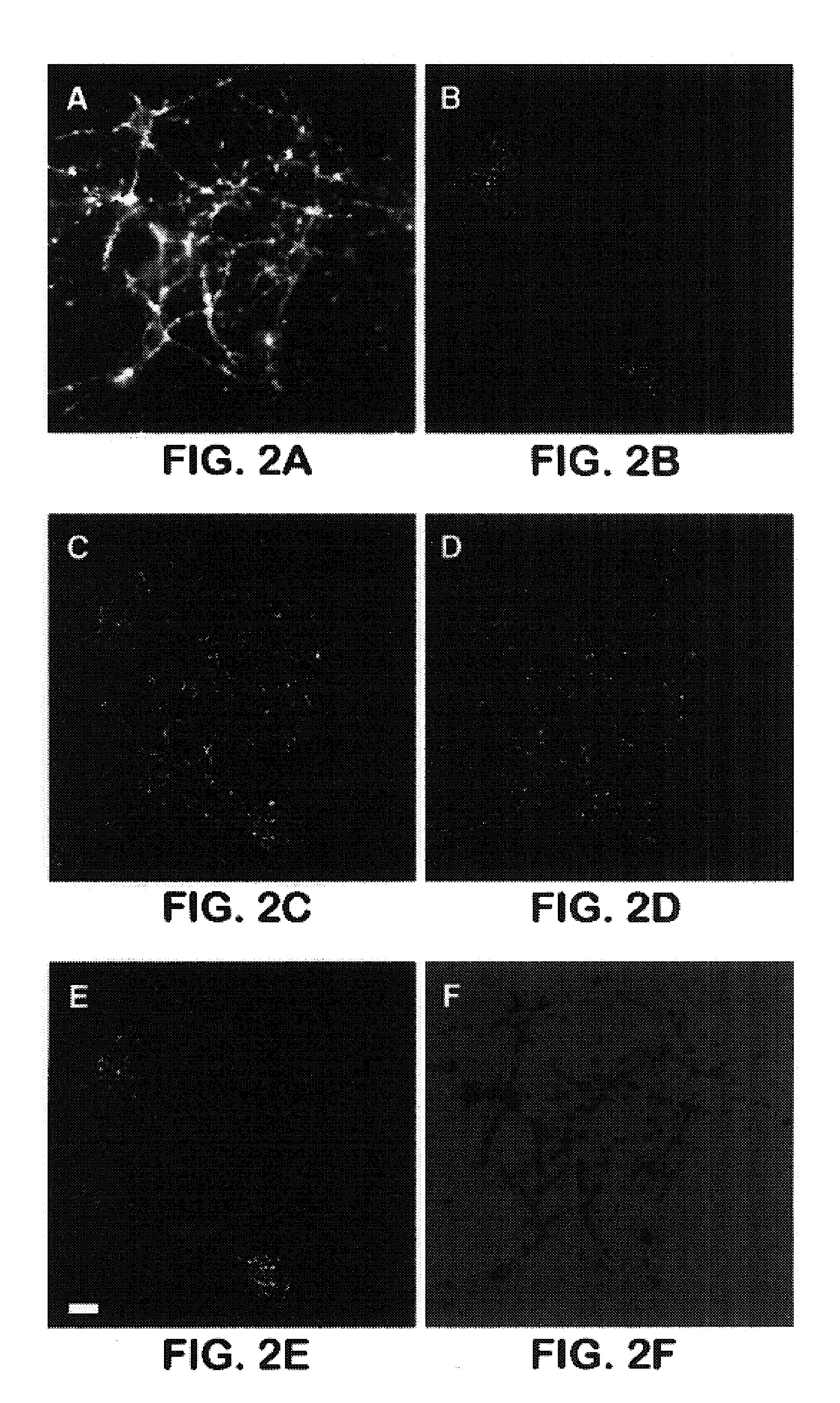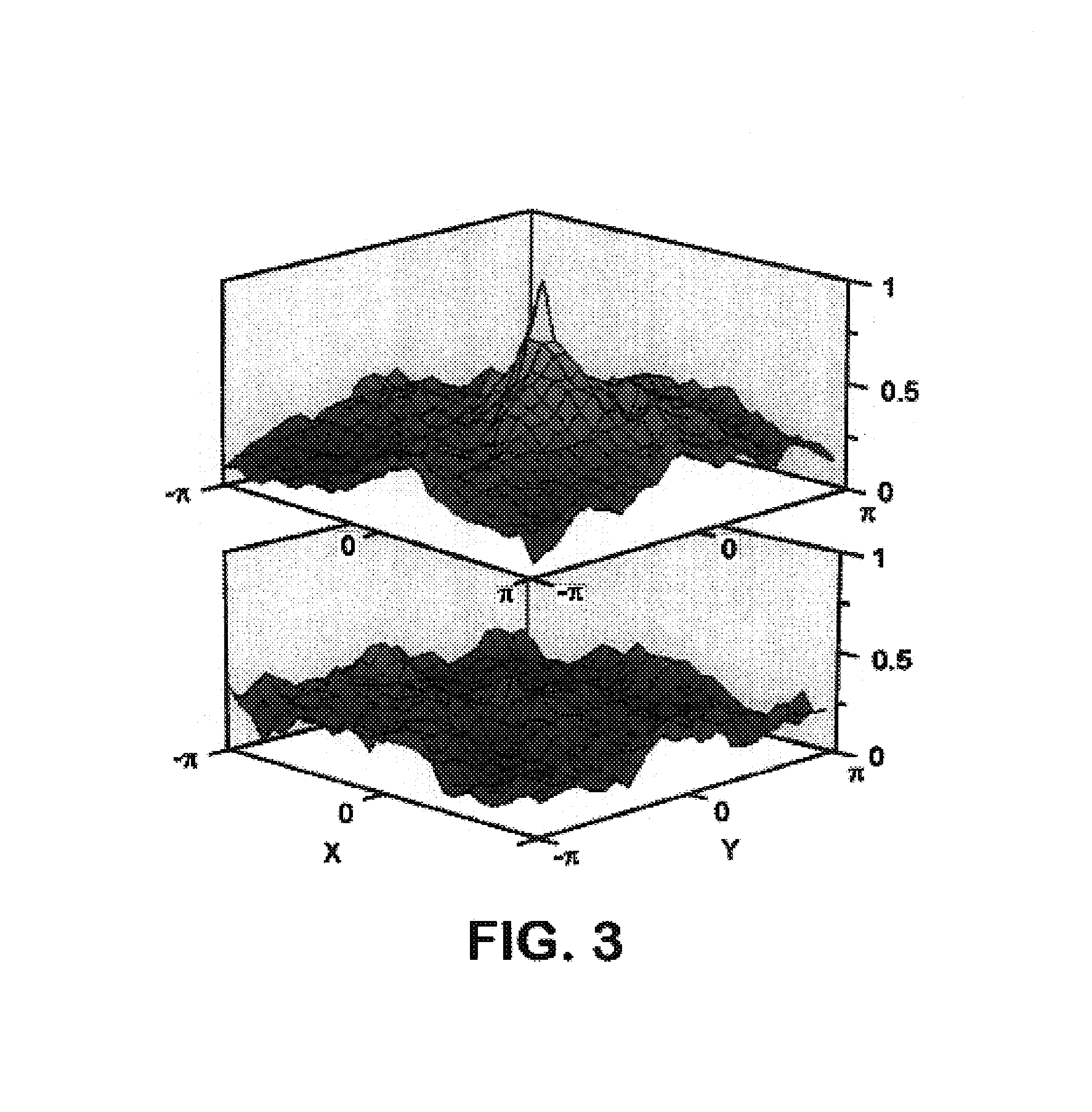Hybrid molecules and their use for optically detecting changes in cellular microenvironments
a technology of hybrid molecules and microenvironments, which is applied in the direction of viruses, fusion polypeptides, dna/rna fragmentation, etc., can solve the problems of limited application, damage, and thereby altering the cells being recorded, and the detection of changes in the microenvironment involving active cells is a particular challeng
- Summary
- Abstract
- Description
- Claims
- Application Information
AI Technical Summary
Benefits of technology
Problems solved by technology
Method used
Image
Examples
example 1
Synaptolucins
[0162]Synaptolucins. Total Cypridina RNA extracted with TRISOLV (Biotecx: Houston, Tex.) served as the template for the RT-PCR synthesis of a cDNA encoding the luciferase (16). The PCR product was subcloned into the amplicon plasmid pα4“a” (17,18) and its sequence determined with SEQUENASE 2.0 (United States Biochemical; Cleveland, Ohio). To construct synaptolucins-1 and -2, the appropriate portions of the open reading frames for Cypridina luciferase (16) and, respectively, rat synaptotagmin-I (19) and VAMP / synaptobrevin-2 (20,21) were fused via stretches of nucleotides encoding the flexible linker -(Ser-Gly-Gly)4-.
[0163]The amplicon plasmids were transfected into E5 cells (17,22) with the help of LIPOFECTAMINE (Gibco BRL; Bethesda, Md.), and replicated and packaged into virions after infection with 0.1 PFU / cell of the HSV deletion mutant d120 (22). The primary virus stock was passaged on E5 cells until the vector-to-helper ratio exceeded 1:4; the ratio was estimated as...
example 2
SynaptopHluorins
[0180]To generate pH-sensitive GFP mutants, a combination of directed and random strategies was employed. In the folded conformation of GFP, the chromophore is located in the core of the protein, shielded from direct interactions with the environment by a tight beta-barrel structure. The remarkable stability of the fluorescent properties of wild-type protein under environmental perturbations, such as pH changes, is due to the protected position of the chromophore. To allow GFP to function as a pH sensor, a mechanism had therefore to be found by which changes in external proton concentration could be relayed to and affect the chromophore.
[0181]The exemplified approach to converting GFP to a pH sensor involves amino acid substitutions that couple changes in bulk pH to changes in the electrostatic environment of the chromophore. To obtain such substitutions, residues adjacent to 7 key positions were mutated. These key positions are known from X-ray crystallography (Ref....
PUM
| Property | Measurement | Unit |
|---|---|---|
| Nanoscale particle size | aaaaa | aaaaa |
| Nanoscale particle size | aaaaa | aaaaa |
| Length | aaaaa | aaaaa |
Abstract
Description
Claims
Application Information
 Login to View More
Login to View More - R&D
- Intellectual Property
- Life Sciences
- Materials
- Tech Scout
- Unparalleled Data Quality
- Higher Quality Content
- 60% Fewer Hallucinations
Browse by: Latest US Patents, China's latest patents, Technical Efficacy Thesaurus, Application Domain, Technology Topic, Popular Technical Reports.
© 2025 PatSnap. All rights reserved.Legal|Privacy policy|Modern Slavery Act Transparency Statement|Sitemap|About US| Contact US: help@patsnap.com



